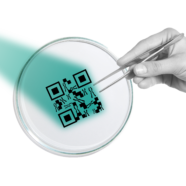- #all
- #banking
- #biometrics
- #business
- #culture
- #digital identity
- #elections
- #ethics
- #facial recognition
- #fingerprint recognition
- #government
- #iris recognition
- #NIST
- #onboarding
- #online elections
- #technology
- #trust
- #UX
- #voice recognition

Entering the era of DNA IDs: Will DNA become an integral part of our personal identity documents?
Since 1986, DNA has revolutionised criminal investigations, arresting killers and clearing the innocent. However, even though DNA fingerprints has helped to identify criminals, they do not contain any real personal information, such as race or height. For this reason, experts consider using them as DNA IDs in government databases for registration, verification, and access control.

AI researcher Martin Tamajka: “If we are to trust AI in courtrooms, it needs to justify its decisions.”
AI is transforming jobs across a wide range of industries. However, there are still concerns about using it extensively when people's lives or futures are at risk, such as in medicine or law. In these cases, it's not enough for AI to just produce an answer – it also needs to be able to explain how it came up with that answer.

From paper to digital: Modernising criminal records with biometrics
Guinea is now dedicated to modernising and digitising its police records. This involves the integration of biometrics into the criminal identification process.

TV vs reality: The investigative work crime shows fail to reflect
If you want to become a criminal investigator or wonder what a real crime scene looks like, let this article be your reality check.

We collect and analyse fingerprints to better understand the needs of law enforcement
Inside the Innovatrics forensic lab, you will find a mix of high-tech fingerprint gadgets and traditional brushes and powders for lifting fingerprints.








